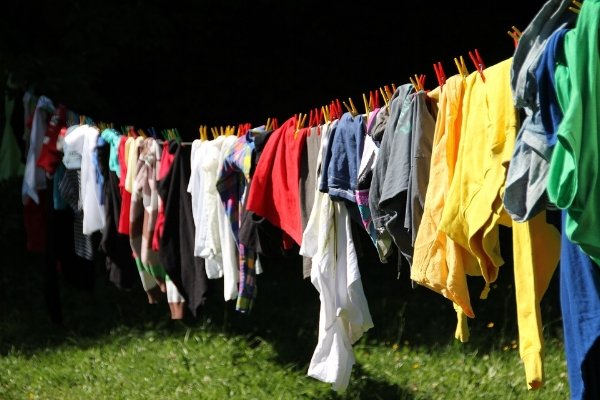Is It Time For A New Dryer?
It looks great in a photo. In reality, this will garner you a fine from the HOA.
Gone are the days of fresh, clean laundry fluttering gently in the breeze, the power of wind harnessed, free for all! We are busy, modern people, and the idea of dragging wet, heavy clothes out-of-doors and displaying our pajamas and underwear for the neighbors to admire and the bees to take respite in doesn’t seem to be on our 'to-do' lists anymore.
Enter the dryer. These magnificent beauties not only dry our clothes in perfect, fluffy splendor but, with the aid of a dryer sheet, can make them smell like they’ve been dried in a sunny heather-filled meadow. But, eventually, your dryer just can't do the job anymore. So, what are some of the tip-offs that your dryer is handing in its notice?
The clothes take an exceptionally long time to dry
In fact, they may not dry at all, but spin coldly and wetly for hours instead of ever drying. But often, it happens slowly at first, and the only way you notice in the early stages is because of the length of time it takes the heavier clothes (blankets, jeans, towels) to dry.
The clothes are too hot
If your clothes come out of the dryer feeling like they’re on fire, it doesn’t mean your dryer is working extra well; this might be the prelude to an actual fire. Too-hot temperatures is one of the signs of a dying dryer.
Do you have to hang your clothes after three hours of tumble drying? It might be time for a new dryer!
The machine makes odd noises
If your dryer starts making weird noises, or something is off, the dryer has a problem. It may be repairable, which brings us to the next point.
Repair bills are out of control
When your dryer starts requiring repairs consistently, or if the repair bill will be high, it doesn’t justify keeping an older machine, it’s time to look into replacing it.
The age of the dryer
If a dryer is more than ten years old, it’s lived a good life in dryer years. Repair bills on a machine this old may only be marginally helpful at best.
Some things you can do to boost your dryer’s lifespan and safe operation:
Clean the lint trap after every single load.
The lint trap is your dryer’s first defense against a fire from a clogged vent hose. It will collect quite a bit of the lint, but what escapes the trap does make it’s way into the vent hose.
Clean the vent hose on a regular basis.
Your manual will tell you how often, but once a year at the very least. If you no longer have a manual, your vent hose will tell you how often by collecting residual lint. The rule of thumb is that cleaning it too often is better than not cleaning it often enough, since a collection of lint in the hose is the dryer version of kindling wood.
Make sure the vent hose isn’t bent or crushed.
A sign it's time for a new dryer? The fire department coming to put the dryer out after it's caught on fire. (The house was saved.)
This is the escape for the blowing hot air, so you never want it to be blocked. Sometimes the dryer gets pushed too far back and this is how the vent hose ends up getting crushed. Only use a metal vent pipe. Plastic or flimsy vent pipes are not safe.
Make sure the vent flap can open and is unobstructed.
If the flap can’t open, this is another way to block the hot air in and create a fire hazard. Plants, empty boxes, and other objects sometimes get pushed up against the vent flap. Also, it’s a good idea to keep an eye on it to make sure it’s working because this might be your first tipoff that there is a problem with the dryer.



